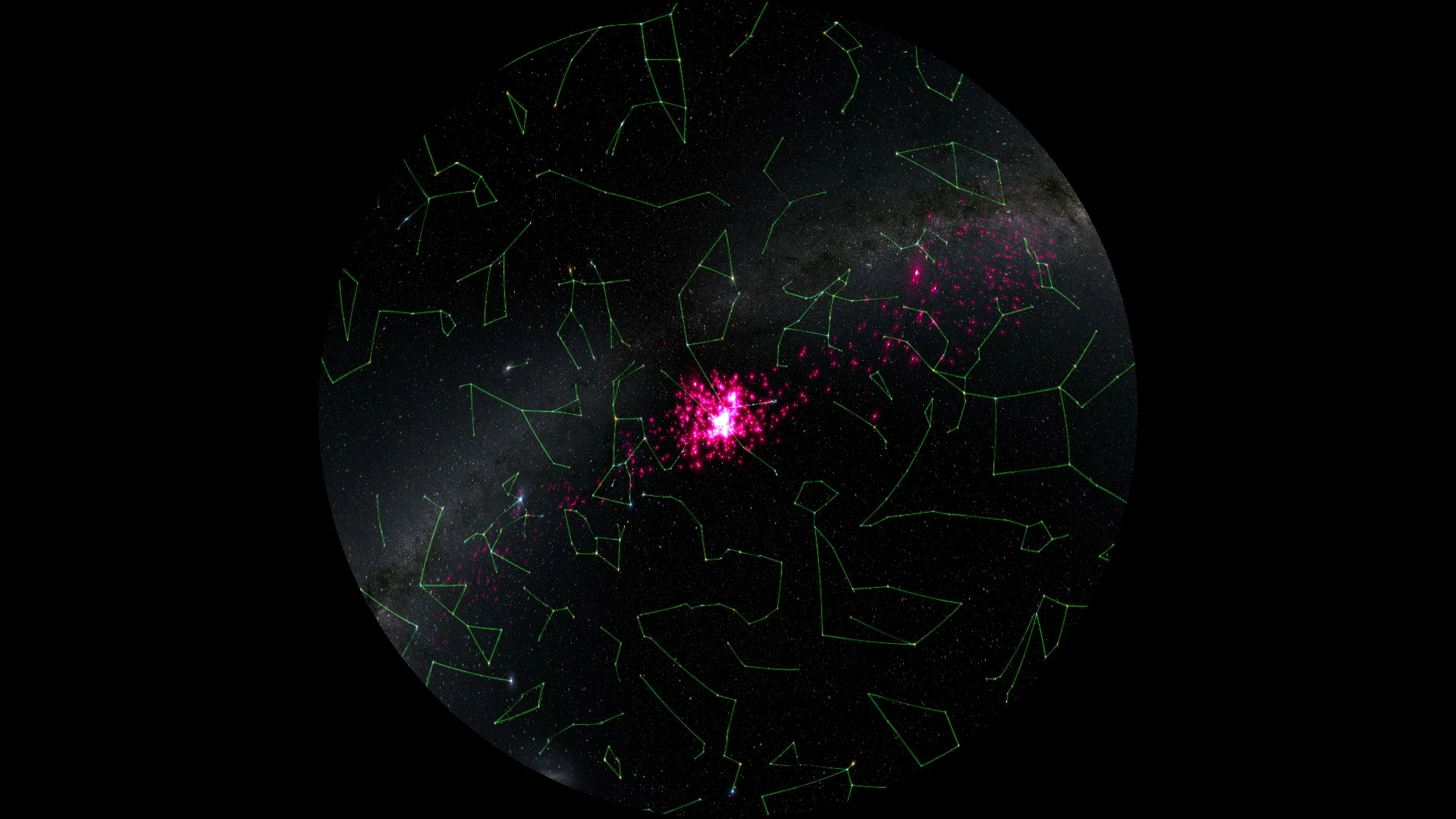Astronomers have discovered the aftermath of a cosmic hit-and-run in our own galactic neighborhood. While studying the closest star cluster to the Sun, ESA scientists realized that it may have been disrupted by a huge lump of invisible mass, possibly dark matter.
The crime scene is a cluster called the Hyades, located just 153 light-years away. From our perspective here on Earth, its brightest stars form a V shape that makes up the head of Taurus the bull.
Its proximity means that the Hyades is one of the most studied star clusters, but actually taking stock of which stars belong to it – or used to – is tricky. Behind the bull’s head lurk many fainter stars, and beyond that are two “tidal tails,” long structures of stars streaming out of the cluster as they jostle each other around with their gravity.
For the new study, the researchers set out to quantify just how many stars there were in those tidal tails. To do so, they analyzed data from Gaia, a comprehensive survey that’s tracking the distance and movements of 1.8 billion stars in the Milky Way.
Then, they developed a model that simulates how stars might be bumped around as they escape the cluster, over the cluster’s 600- to 700-million-year lifespan. When these simulations were compared to the Gaia data, the team found that the Hyades’ tidal tails were far longer than expected. They included thousands of stars spread across thousands of light-years.
But weirdest of all was the fact that one of the tails seemed to have fewer stars than it should have. The researchers tweaked their simulations to try to account for the oddity, and found an intriguing possibility that could create the effects seen in the real-world sky: a collision with a clump of matter with the mass of about 10 million Suns.
“There must have been a close interaction with this really massive clump, and the Hyades just got smashed,” says Tereza Jerabkova, an author of the study.
One big question remains then – we’re seeing the smoke, but where’s the fire? There are no visible gas clouds or other star clusters in the vicinity, so what could have caused that kind of disruption?
The team pins the blame on dark matter, that mysterious – and conveniently invisible – material that is thought to pervade the universe, interacting with regular matter only through its intense gravity. Dark matter is expected to clump together, perhaps helping to seed galaxies in the process. But, as this study suggests, sometimes this stuff giveth, and sometimes it taketh away.
“With Gaia, the way we see the Milky Way has completely changed,” says Jerabkova. “And with these discoveries, we will be able to map the Milky Way’s (dark matter) sub-structures much better than ever before.”
The research was published in the journal Astronomy & Astrophysics.
Source: ESA




